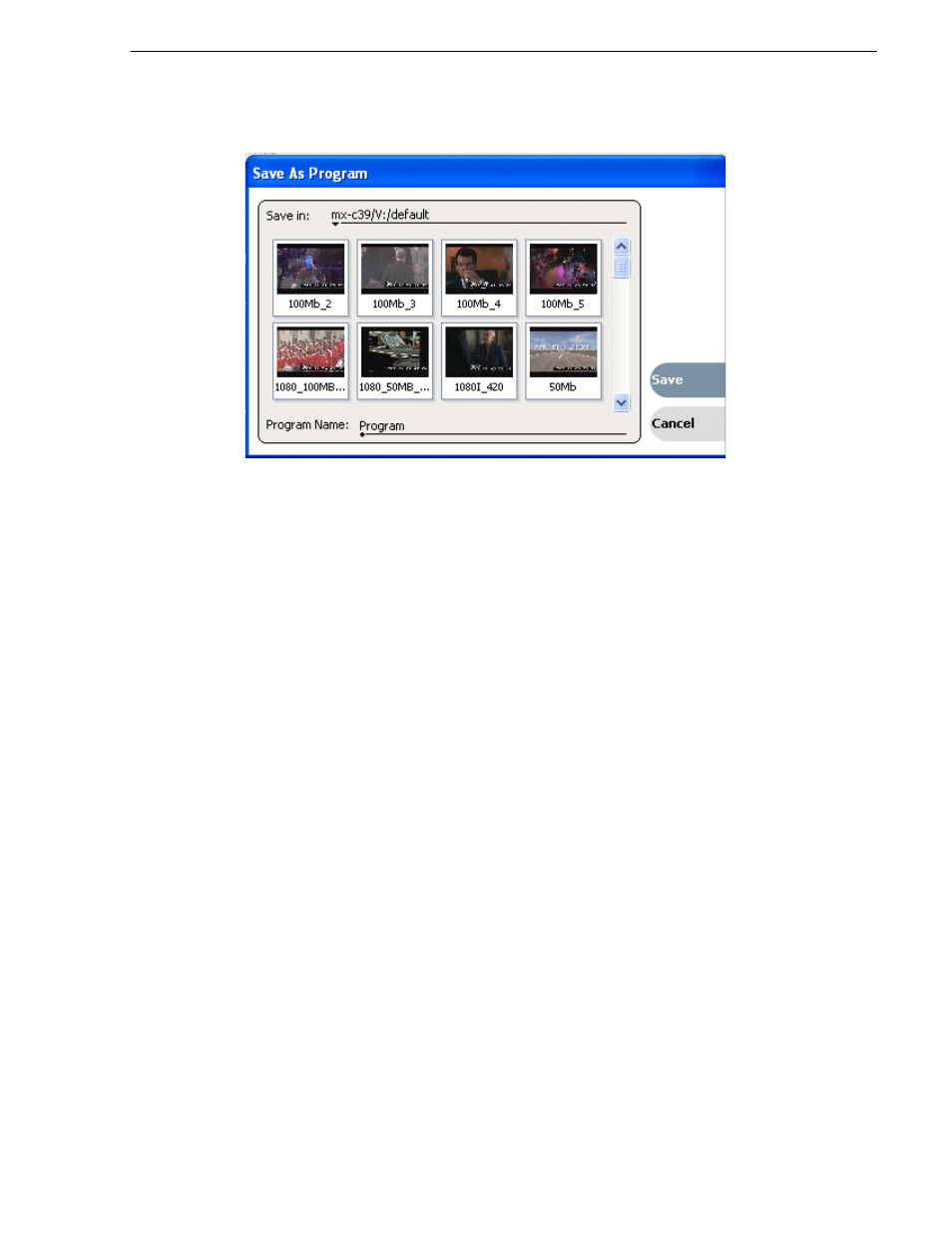Importing a text file as a playlist – Grass Valley K2 Media Client User Manual v3.3 User Manual
Page 115

June 5, 2009
K2 Media Client User Manual
115
Importing a text file as a playlist
3. Use the
Save In
control to change the current bin if required.
4. Select the
Program Name
text entry control to change the program name, then click
OK
.
The list is saved as a program in the current bin.
Importing a text file as a playlist
This feature is part of the licensable AppCenter Pro option.
Import text file as playlist
— If you are licensed for AppCenter Pro, you receive the
import text file as playlist feature. With this feature you can specify a playlist as a text
file and then import it into AppCenter. You can choose to import the playlist as a new
list or append to an existing list. When appending to an existing list, the imported
playlist is added as a section at the end of the existing list.
The information in the text file must be arranged as follows:
• The text file must have at least three columns, separated by spaces or tabs.
• For each row, one column must specify the clip name, one column must specify the
mark in point, and one column must specify the duration.
• The clip name can include a path, or it can be a simple clip name with no path.
Spaces in the path/name are not allowed.
• The format for specifying a path with the clip name is volume:/binname/clipname.
For example, V:/default/Clip_1.
• If the clip name has no path, the clip must be in the current bin.
• Timecode can be formatted with separators or without separators. If without
separators, it must be in format HHMMSSFF. If with separators, it can be in
single-digit format H:M:S:F, it can be in double-digit format HH:MM:SS:FF, or it
can have the single-digit and double-digit formats combined. Colon, semicolon,
period, and comma are all legal timecode separators.
• Timecode values are allowed to be out of range, as AppCenter normalizes
